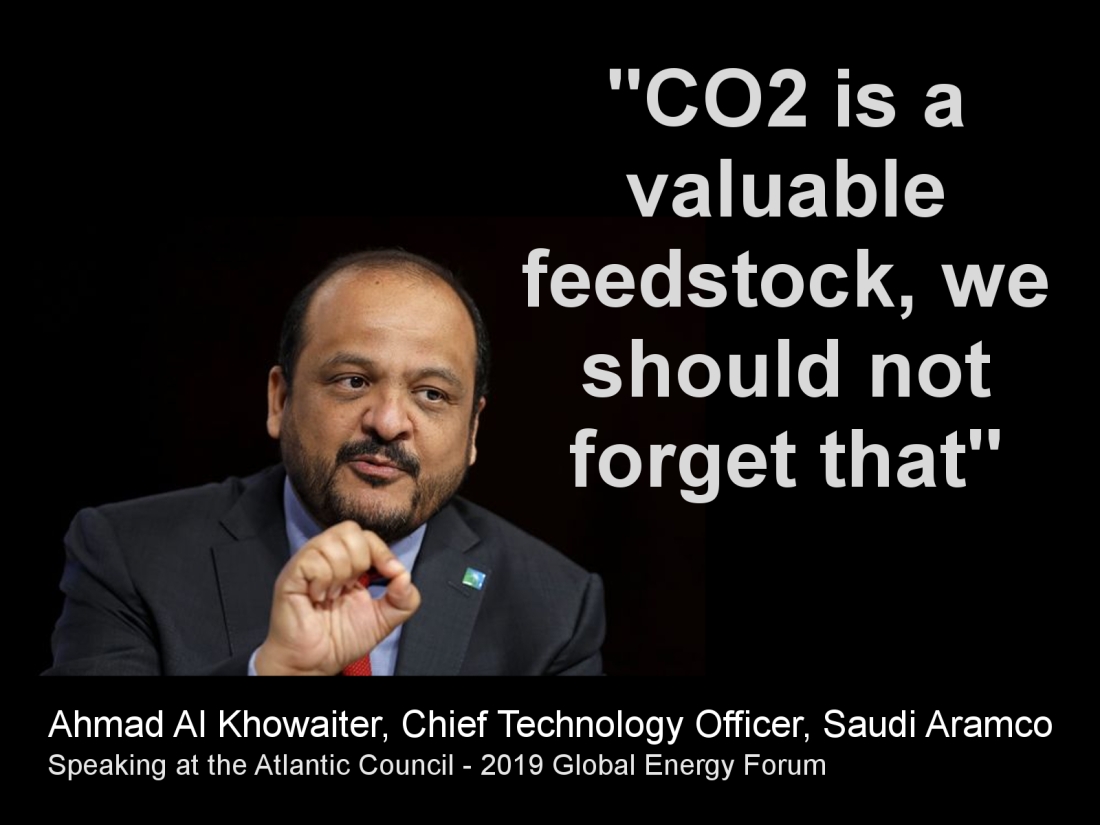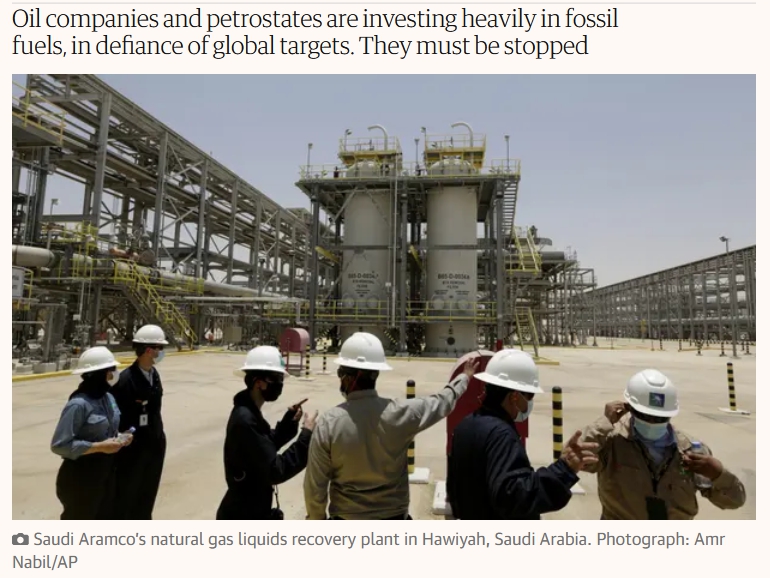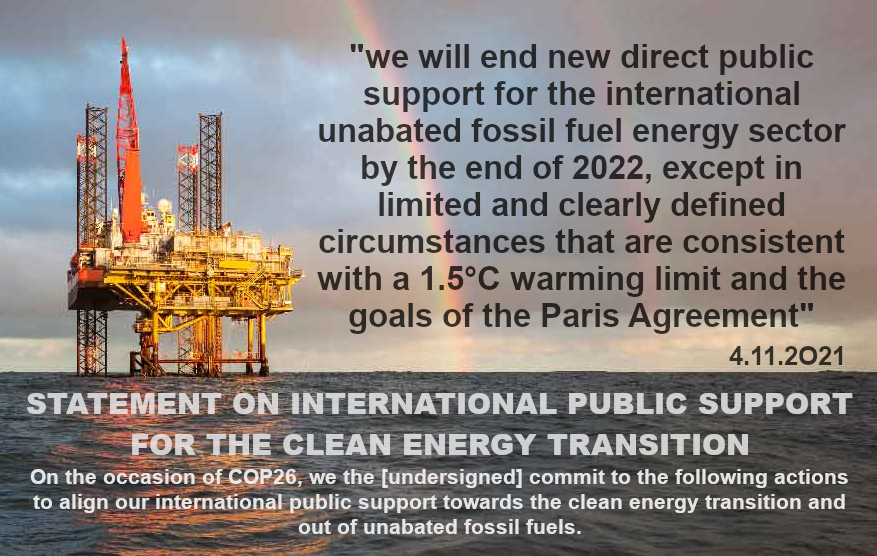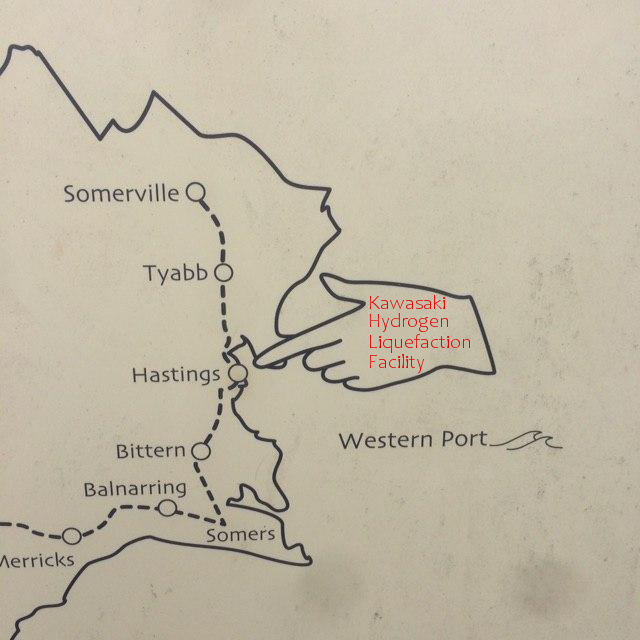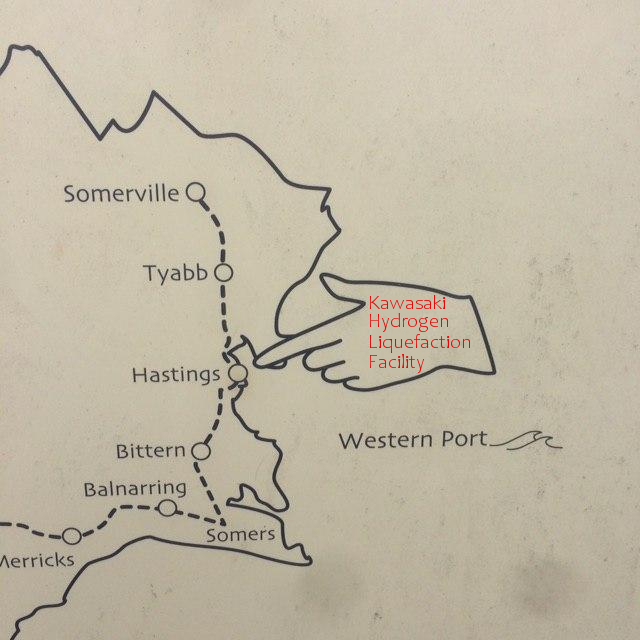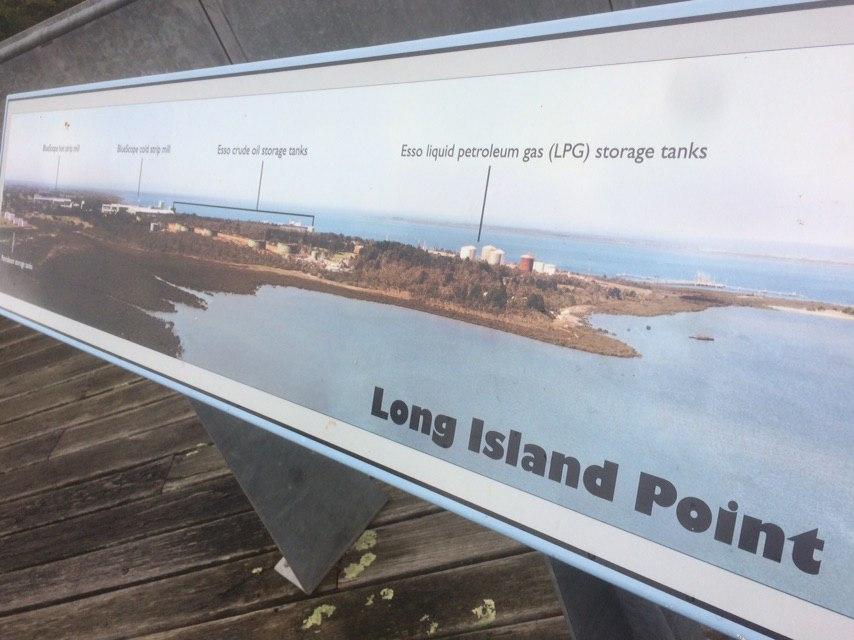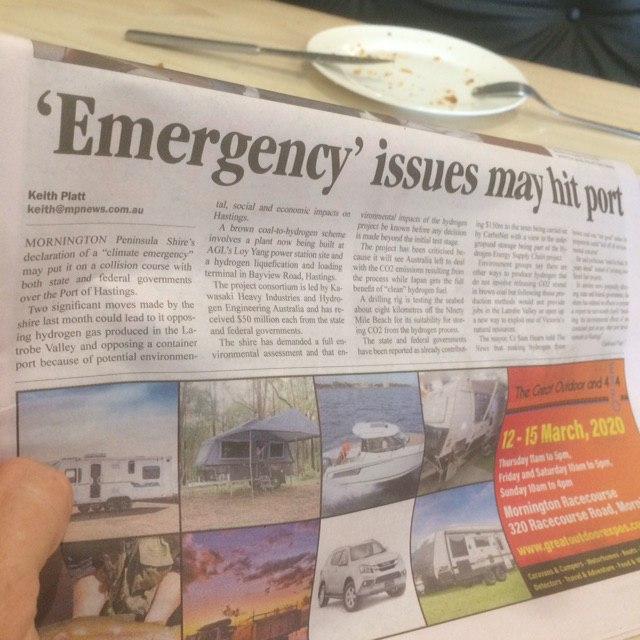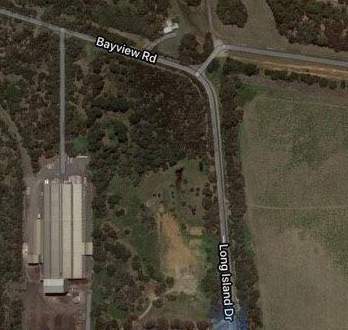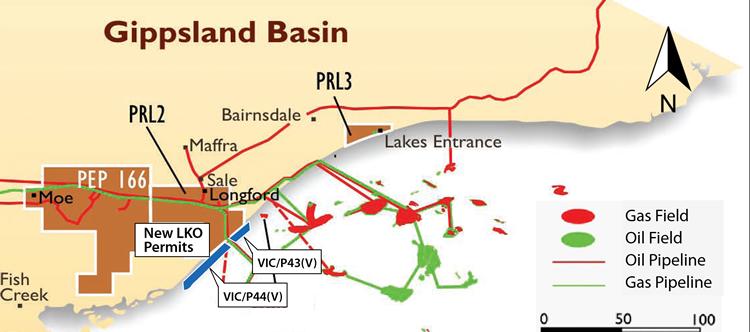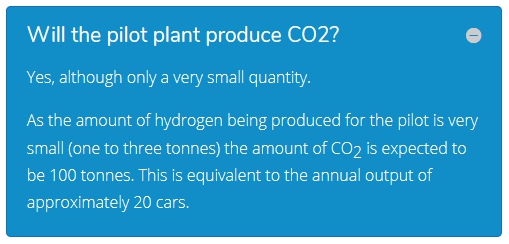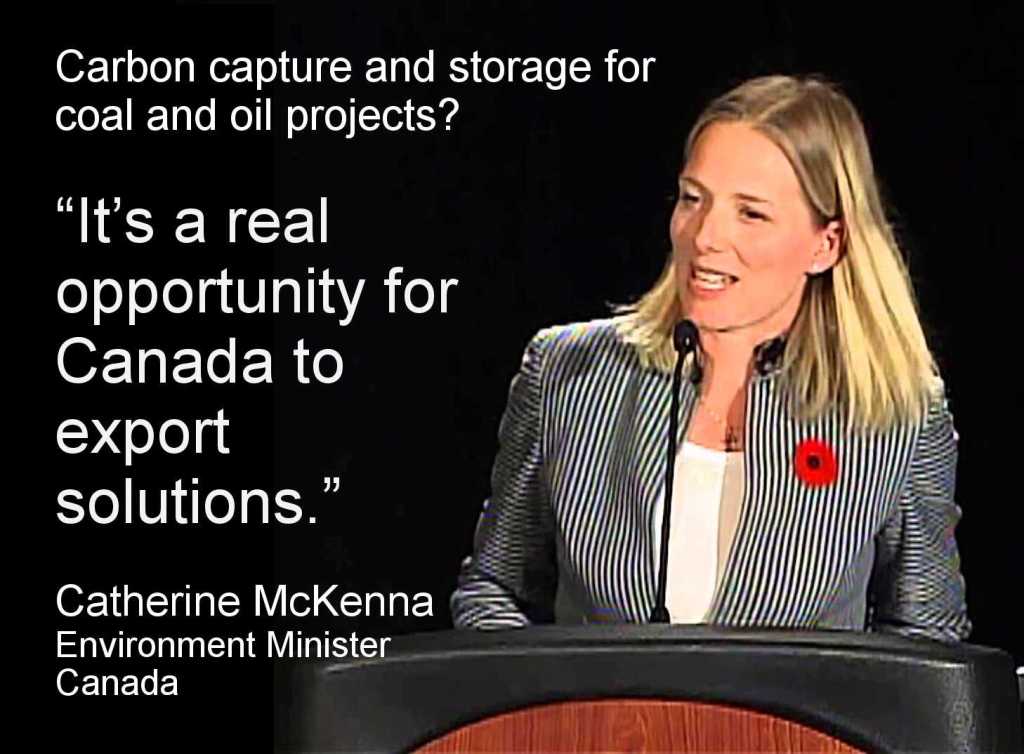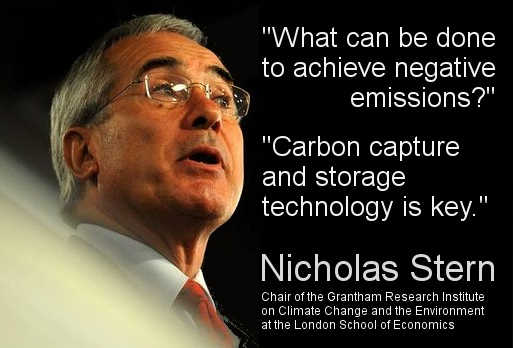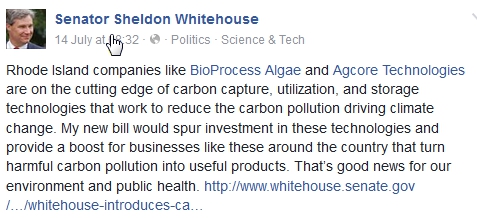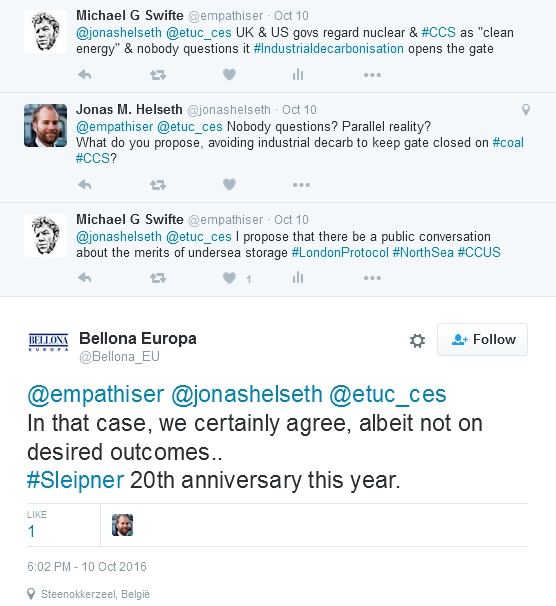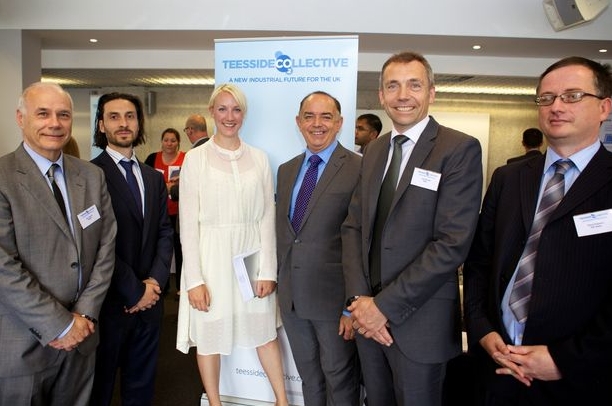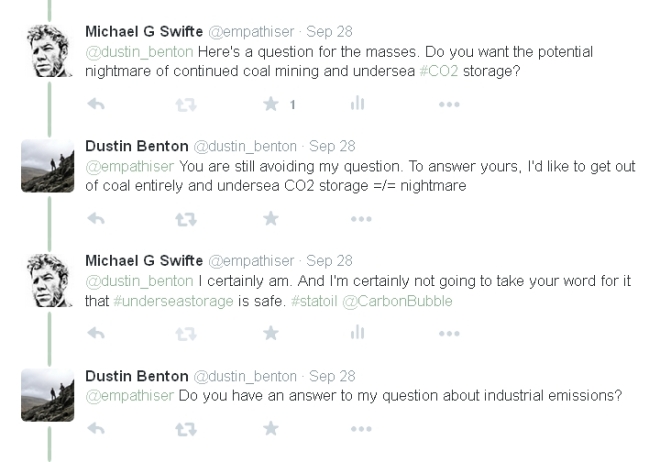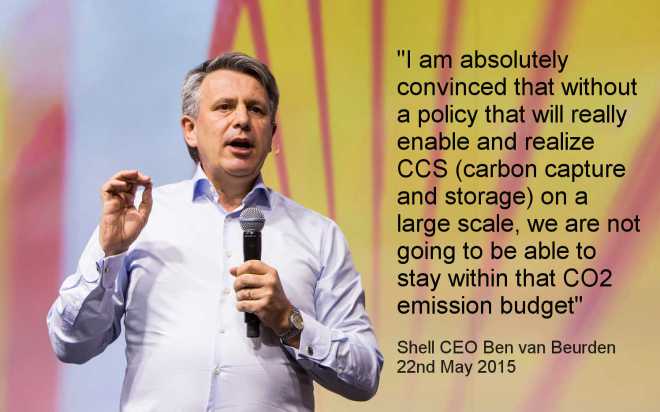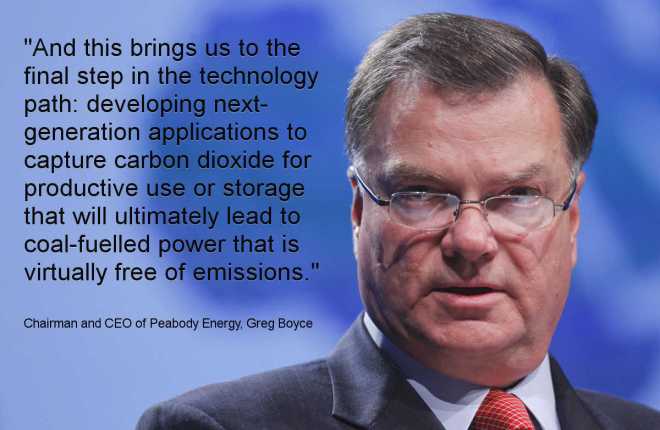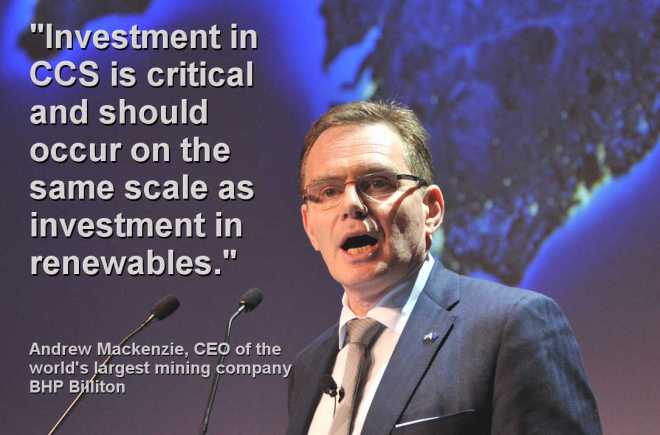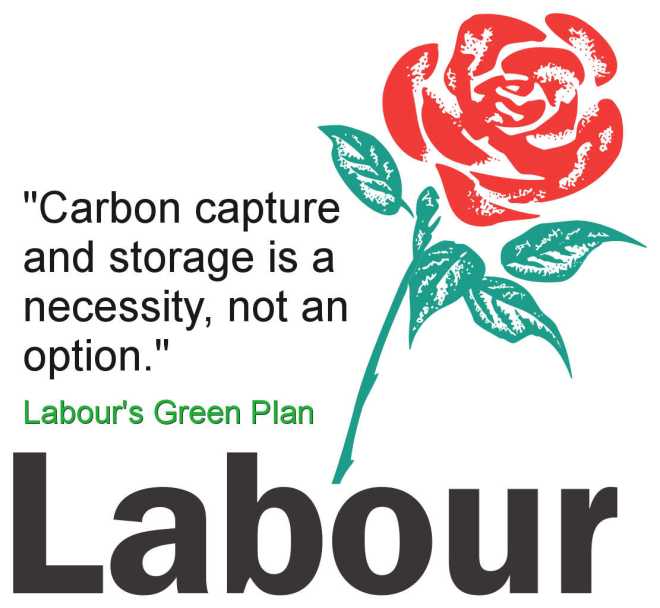How climate activism and ‘climate action’ were made to suit the business as usual/sustainable development agenda.
By Michael Swifte

[Lead image] Ahmad Al Khowaiter, Chief Technology Officer, Saudi Aramco
[Image credit] Aaron M. Sprecher / Bloomberg
Quotes transcribed from the video ‘Decarbonization of oil and gas – 2019 Global Energy Forum’
What we think of as a waste product can actually become a very valuable product
CO2 is a valuable feed stock, we should not forget that.
[Video] https://youtu.be/d5PYOKyUbJA?t=467
CONTENTS
Part 1. Questions and Answers
Introduction
The Goal
Defining ‘Action’
A diabolical concession to carbon capture and storage
Part 2. Strategic Failure
Public failures
Strategic climate justice failure – a timeline
Part 3. Industry Readiness
Value adding CO2 as a waste product
Pipelines and storage deliver transition
Evidence of a CCUS boom
Part 4. Thinking Properly
Boondoggles do damage
Fast moving and dangerous
Conclusions
Part 1. Questions and Answers
Introduction
This briefing represents 10 years of research and activism starting with the fracking boom impacting my home state. A few years into the fracking boom I experienced the take-over of environmental/anti-fossil fuel activism by climate NGOs funded primarily through US based philanthropies working with Australian philanthropists.
I vowed to learn every possible lesson from the fracking boom and employ those lessons against the next phase of fossil fuel extractivism. I have always seen fossil fuel extraction as a dirty and destructive industry and a pillar of globalist hegemony. Like fracking, CO2 enhanced oil recovery (CO2-EOR) had been practiced/developed for decades before appearing as a ‘solution’ in the energy market place. Like fracking, efforts to advance carbon capture and storage for CO2-EOR have received weak resistance in legislatures as new subsidies and other industry development supports have been established.
It is lamentable that the many technical experts, pundits and spokespeople who offer positions on climate and energy refuse to speak about the political will. As a generalist and an independent activist and researcher, I don’t have the credentials or the backing of any institutions to give me a veneer of credibility. What I do have is a working understanding of critical theory, psywar and the networked nature of modern power.
As a generalist I can comprehend enough organic chemistry to feel confident that my statements about industry readiness for a carbon capture and storage (CCS) boom are substantive. I offer this briefing with the expectation that anyone who disagrees with my assertions will take the time to critique my work in good faith. It is most likely that this briefing will be met with silence by the climate campaigners who ought to care that the establishment is once again ensuring that business as usual continues. It is the silence of climate campaigners that I contend is the most dire outcome stemming from their reliance on billionaire philanthropists and their agents. It is in the space created by the shared silences of industry, government, media and non government organistions (NGO) that the forces engineering business as usual operate.
The Goal
Sustainable Development Goal 13: Take urgent action to combat climate change and its impacts
Climate change presents the single biggest threat to development, and its widespread, unprecedented effects disproportionately burden the poorest and the most vulnerable. Goal 13 calls for urgent action not only to combat climate change and its impacts, but also to build resilience in responding to climate-related hazards and natural disasters.
[Further reading] https://unstats.un.org/sdgs/report/2016/goal-13/
Defining ‘ACTION’
Q. What is ‘climate action’?
A. It is primarily/ostensibly about reducing emissions but it also includes adaptation plans.
Some defined actions:
- avoided emissions from aforestation
- carbon offsets purchased in the marketplace
- reduced emissions from renewables
- phasing out ‘unabated’ (without CCS) fossil fuels
- carbon removal and carbon capture utilisation and storage
- biomass with carbon capture and storage (BECCS)
Q. Are fossil fuels being phased out?
A. No. The only commitments being made are for phasing out ‘unabated’ fossil fuels. Much of the phase out action involves the replacement of retired energy generation. Conventional coal fired power has been a particular focus of phase-out commitments.
[Further reading] https://wesuspectsilence.wordpress.com/2022/07/04/when-thinking-about-fossil-fuel-phase-outs-the-key-word-is-unabated/
Q. What have climate negotiations delivered?
A. Treaties, agreements and shared commitments, none of which specify phasing out of fossil fuels. All the measures were developed for mitigation and management of emissions. Carbon accounting is a primary emissions management tool.
Consensus Mechanisms
- The 1992 Earth Summit intoduced climate change as an active theme in environmental consensus building.
- The Kyoto Protocol provided 3 mechanisms which are all carbon accounting formulations: Clean development mechanism (CDM), Joint implementation, (JI) Emissions trading (ET). CCS was included as an eligible technology under the CDM in 2011 (Article 6).
- The Paris Agreement is a binding international treaty providing frameworks and mechanisms for finance and carbon accounting. Nationally Determined Contributions (NDCs) are the central carbon accounting framework in the Paris Agreement. NDCs do not compel or necessarily encourage any country or state to phase out fossil fuels. NDCs are about emissions reductions on a ledger.
- COP 26 produced commitments to phase out ‘unabated’ fossil fuels.
[Further reading] https://unfccc.int/process/the-kyoto-protocol/mechanisms
[Further reading] file:///C:/Users/User/Downloads/20220317-CSUs_under_Article_6_Mar_2022_vf.pdf
A diabolical concession to carbon capture and storage
Q. How did ‘they’ turn climate activism into an ineffective force for the environment?
A. At Wrong Kind of Green we contend that an expansive network of philanthropies/NGOs and their connections in government, corporations and the media work under prescribed narratives and talking points defined by funders and in so doing become useful idiots for the global governance agenda. We call this networked formation the ‘non profit industrial complex’. We call the process by which networks are exploited and messaging shaped to control global consensus mechanisms and manufacture the consent of the general public, ‘networked hegemony’.
[Further reading] https://www.wrongkindofgreen.org/2017/07/27/avaaz-the-globes-largest-most-powerful-behavioural-change-network-part-i/
Q. What is the Design to Win plan?
A. The Design to Win plan was produced in 2007 for a collection of philanthropic foundations to further their ‘climate’ ambitions. It contains positions in support of “unavoidable” fossil fuels and the deployment of carbon capture and storage. The Design to Win plan launched John Podesta’s ClimateWorks Foundation which became his vehicle for establishing a vast network of NGOs of varying types including re-granting NGOs which disseminated the prescribed narratives and talking points to smaller NGOs. The media helped to reinforce prescribed narratives through amplifying selected NGOs and spokespeople, and participated in considerable silences regarding the growing political will for carbon capture and storage.
The 2007 report Design To Win: Philanthropy’s Role in the Fight Against Global Warming would serve to shape the future of the climate movement. The result of a commissioned study funded by the David and Lucile Packard Foundation, the Doris Duke Charitable Foundation, the Energy Foundation, the Joyce Foundation, the Oak Foundation, and the William and Flora Hewlett Foundation, Design To Win “served as a catalyst for an unprecedented outpouring of funding on energy and climate issues. Implicit to the report was the idea that the ‘market knows best’ and that the role of regulators is to create the right conditions and send the right signals for a transition to a low-carbon economy.
[Further reading] https://www.climateworks.org/wp-content/uploads/2007/08/Design-to-Win.pdf
Q. What is ‘net zero’?
A. Net Zero is an accounting outcome derived through the mitigation and management of emissions. Because it is based on results that appear on a ledger where actual emissions and various instruments representing offsets or avoided emissions are turned into numbers. Net Zero and other emissions mitigation and management schemes can and are being gamed.
[Further reading] https://mahb.stanford.edu/library-item/fossil-fuels-net-zero-carbon-emissions-scam-is-something-humanity-doesnt-have-time-for/
[Further reading] https://medium.com/@kim.hill/unpacking-extinction-rebellion-part-i-net-zero-emissions-5a5eed68d9ce
Q. What is BECCS?
A. The use of biomass as an industrial feed stock with carbon capture and storage applied. When biomass pellets produced from agroforestry trimmings, whole trees or timber industry waste is deemed carbon neutral, it provides a negative value on Net Zero ledger when CCS is applied. Biomass is widely reported as “renewable” when used in place of coal in conventional power plants.
The idea behind BECCS, Bioenergy with Carbon Capture and Storage, is in part quite similar to CCS, Carbon Capture and Storage. However where BECCS goes a step beyond CCS is that Drax and other biomass burning companies proposing to use the technology argue that if they can capture the emitted CO2, burning biomass can become carbon negative and a climate solution! (This is based on the false premise that burning wood is carbon neutral) In 2019, Drax announced its ambition to become a “carbon-negative” company by 2030. Drax proposes that it will continue burning biomass and that with BECCS technology it will be able to capture up to 16 million tonnes of the CO2 it emits through its wood burning per year.
[SOURCE] [Download link] https://www.biofuelwatch.org.uk/2022/beccs-factsheet/
[Further reading] https://www.chathamhouse.org/2022/10/why-burning-biomass-not-zero-carbon
Q. Why is Farhana Yamin a pivotal figure in climate action?
A. Because she spent decades working as a policy wonk for the Intergovernmental Panel of Climate Change (IPCC) and for the Children’s Investment Fund Foundation, one of the key funders of Extinction Rebellion (XR). Shortly before joining XR with the sustainable development goals (SDG) tucked under her arm, Yamin’s think tank Track 0 produced the perfect articulation of the concession position engendered in global climate activism by John Podesta, and a range of billionaire donor advised funders and impact philanthropists.
The concession position, formulated in the mid 2000s and carried forward in the IPCC modelling, is to allow a little BECCS in exchange for a renewables revolution. The Track 0 rationale explains that to implement BECCS will require the implementation of CCS. The concession to BECCS is thus tethered to accepting some CCS. Because the BECCS concession is never included in any climate campaigner talking points and does not suit the prescribed narrative that asserts that there is political will to phase out fossil fuels, it is almost entirely excluded from discussion. It is as if the work of the Oil and Gas Climate Initiative which is supported by the National Grid, the North Sea Transition Authority, and the Department for Business, Energy, and Industrial Strategy doesn’t exist. The collective narrative driven silence creates a false reality as the context for XR and Just Stop Oil (founded by XR founder Roger Hallam) activism.
Bioenergy production can be integrated with existing CCS technologies relatively simply and there are no technical implications of capturing a CO2 stream from biomass (Gough and Upham, 2010; Muratori et al., 2016). BECCS could complement the current expansion of the use of biomass as fuel (Rhodes and Keith, 2008). However, the success of BECCS is dependent on upcoming developments in CCS, where there are significant uncertainties surrounding CO2 transport networks, storage capacities, legality, social acceptability and technology incentives (McGlashen, Shah and Workman, 2010).
Q. How does the work of Biden administration senior advisor for ‘clean energy’ John Podesta intersect with the work of billionaire hedge fund manager Chris Hohn?
A. Both provide funding to Bellona Europa which has been creating opportunities for BECCS for at least 2 decades. Both have extensive interests in climate activism and steering industry toward greater emissions reductions using CCS and BECCS.
Bellona Europa works primarily on industrial decarbonisation, energy systems, circularity, sustainable finance, and negative emissions (carbon dioxide removal).
To back and support our work, our funders are mainly European and International philantropies: CIFF (Children’s investment fund), ECF (European Climate Foundation) and Climateworks. We also receive grants at the EU level (EU Horizon 2020 project, “European Negative Emissions Projects” ) and at the national level (Norwegian, Nordic & EEA grants for research).
[SOURCE] https://bellona.org/about-bellona
Industrial sectors such as cement and steel production are responsible for nearly a quarter of global greenhouse gas emissions. We need the right regulatory, policy and financial frameworks to bring industry emissions down. We focus on things like carbon performance regulation, heating and cooling legislation, innovation, carbon capture and storage technologies and enforcement through carbon disclosure and shifting investor behaviour. We want to ensure that Europe leads the way in industrial decarbonisation and accelerate industrial decarbonisation at a global scale.
[SOURCE] https://ciff.org/priorities/climate-change/
‘An Industry’s Guide to Climate Action, CHAPTER 3 summary: The Dawn of a New Industry’ (Funded by the Childrens Investment Fund Foundation)
As the transformation of the energy system continues and new technology options are developed and brought to maturity, measures that can provide effective and deep emission reductions to industry processes are needed today. • The capturing of CO2 emissions from industrial clusters and their transport and permanent offshore storage in deep geological formations (CCS) constitutes an essential part of the solution
CCS buys humanity time and industry a functional climate transition.
[SOURCE] https://bellona.org/publication/an-industrys-guide-to-climate-change
[Further reading] https://www.whitehouse.gov/briefing-room/statements-releases/2022/09/02/president-biden-announces-senior-clean-energy-and-climate-team/
[Further reading] https://www.realclearinvestigations.com/articles/2020/01/06/a_british_billionaires_big_investments_in_us_environmental_politics_121359.html
[Video] ‘Sir Chris Hohn: The Full Interview’ https://youtu.be/xqP6091Wf9o
Q. Why is biomass with CCS (BECCS) so crucial to net zero accounting?
A. Because BECCS is the combination of the biomass double counting scam and the near zero emissions projections for CCS. BECCS has erroneously been labeled a ‘negative emissions technology’.
BECCS employs biomass as a feed stock, and the ‘technology’ is collectively known as carbon capture and storage. The biomass accounting scam labels trimmings from agroforestry including whole trees that, in theory, are permanently sequestering CO2 as ‘carbon neutral’. This means that when biomass is used as a feed stock, the emissions created by this ‘carbon neutral’ product acquire a negative value on the Net Zero ledger. The logic goes that with BECCS as the crucial supplier of negative net zero accounting value, variously derived carbon offsets, mitigation of fugitive emissions, and the assumption that CO2 storage works effectively, the net zero ledger can be brought to zero.
[Further reading] https://www.drax.com/sustainability/sustainable-bioenergy/ipcc-on-biomass-power-generation-carbon-accounting/
[Further reading] https://www.nrdc.org/experts/sasha-stashwick/how-biomass-industry-sent-sustainability-smoke
Part 2. Strategic Failure
Public Failures
Tzeporah Berman
Tzeporah Berman heads up the campaign for a Fossil Fuel Non-Proliferation Treaty, she has a long history as a well connected environmental campaigner. In 2016 Berman joined UK High Level Climate Action Champion for COP 26, Nigel Topping (We Mean Business, Grantham Institute, UK Infrastructure Bank) and Suncor CEO Steve Williams to develop a ‘groundbreaking’ deal on emissions caps on Canadian tar sands. In 2021 Suncor acquired a stake in carbon capture technology company Svante. Suncor is part of the Pathways Alliance which has plans to emulate the Alberta Carbon Trunk Line as the basis for new gas and tar sands decarbonisation hubs. Chevron recently bought a stake in Svante who have made long term investments in carbon capture technology. Svante have stated their technology is for “rapid deployment”.
[Further reading] https://www.wrongkindofgreen.org/2016/08/31/watch-albertas-environment-minister-commends-leap-manifestos-tzeporah-berman-for-helping-craft-the-tarsands-deal/
[Further reading] https://globalnews.ca/news/7705834/suncor-energy-svante-carbon-capture-investment/
[Further reading] https://www.ctvnews.ca/climate-and-environment/pathways-alliance-president-says-oil-industry-will-be-judged-on-climate-goals-1.6147569
[Further reading] https://finance.yahoo.com/news/chevron-invests-carbon-capture-removal-213000800.html
[Further reading] https://esgtelegraph.com/environment/carbon-capture-tech-provider-svante-raises-over-300-million/
Tzeporah Berman has never mentioned the Alberta Carbon Trunk Line (ACTL) let alone contributed to any effort to unpack the project and contribute to public understanding. The North West Refining, Sturgeon plant was already under construction when Berman met with Topping and Williams. The brains behind the project, Ian MacGregor had already explained the scale of the vertically integrated refinery-pipeline-storage project in a speech to the International Brotherhood of Boilermakers 33rd Consolidated Convention in Las Vegas, Nevada. The ACTL has been called the “world’s largest CO2 pipeline”. With the Canadian government poised to introduce an American style tax credit for CCS, it seems like tar sands extraction and refining, gas extraction and CO2 enhanced oil recovery have a firm future in Alberta.
Recent statements from Alberta premier Danielle Smith make it very clear that the province is about to be subject to a CCUS boom.
We are working with the federal government closely on technologies like carbon caputre utilization and storage, hydrogen, critical minierals,
[SOURCE] https://youtu.be/xE-hNQkX7CI
[Further reading] https://www.msn.com/en-ca/money/topstories/opinion-us-climate-action-a-roadmap-for-canada-to-support-carbon-capture-and-storage/ar-AA122faE
[Further reading] https://www.cbc.ca/news/canada/calgary/alberta-premier-danielle-smith-sovereigty-act-just-transition-1.6709043
[Ian MacGregor and the ACTL] https://youtu.be/y4r1_4t_eiM
Julian Brave Noisecat
JB Noisecat left 350 dot org in early 2019 and joined Data for Progress, the progressive polling agency/think tank, taking on the role of Vice President of Policy & Strategy. As a member of Data for Progress, along with Sean McElwee, Noisecat advised the Biden-Sanders Unity Task Force in advance of the Biden campaign’s final policy statements. He would go on to proclaim that Biden’s “build back better” plans “are a Green New Deal in all but name”. Data for Progress never had a problem with CCS, indeed they redefined “non-renewable clean energy” to include CCS, hydrogen and nuclear in their ‘scorecard’ on Jay Inslee’s policy agenda in June 2019. Noisecat went on to join the NDN Collective who are recipients of significant funding from the Bezos Earth Fund.
[Further reading] https://www.theguardian.com/commentisfree/2020/jul/20/joe-biden-has-endorsed-the-green-new-deal-in-all-but-name
[Further reading] https://www.filesforprogress.org/reports/gnd_scorecards/Inslee.pdf
It could be argued that Data for Progress, with the help of the World Resources Institute, authored the original Green New Deal document in September 2018. The Green New Deal became an election vehicle for Alexandria Ocasio-Cortez (AOC) and a campaign focus for the Sunrise Movement. AOC and Sunrise cofounder Varshini Prakash also helped CCS and nuclear pass the Biden-Sanders Unity Task Force. If you follow the money and consider how First Nations and frontline communities were marginalised from the Green New Deal process, it’s hard not to see it as a cynical ploy to get another neoliberal Democrat president into place.
[Further reading] https://www.dataforprogress.org/green-new-deal-report
[John Washington to New Consensus] https://youtu.be/fEA_9iKtSTY
JB Noisecat seems to have helped keep “the door open” for CCS in his time since leaving the world’s most influential climate campaigning organisation (350 dot org). Any number of climate NGOs have signed open letters stating their opposition to CCS citing multiple concerns. Noisecat transformed from a climate campaigner, utterly opposed to new fossil fuel extraction, to the spokesperson for a kind of mute reformism. The passing of the Inflation Reduction Act with its “monumental enhancements” to the 45Q tax credit is testament to Noisecat’s failure.
[Further reading] https://popularresistance.org/part-i-the-unannounced-death-of-the-green-new-deal/
[Further reading] https://carboncapturecoalition.org/inflation-reduction-act-of-2022-makes-monumental-enhancements-to-the-foundational-45q-tax-credit/
Greta Thunberg
Greta Thunberg is young and cannot be considered a failure, but a critical investigation of her messaging and content is always required. An important part of that critical view is consideration of Greta’s advisers and enablers. Cory Morningstar’s ‘The Manufacturing of Greta Thunberg’ series, provides a compelling picture of a child with elite connections propelled into celebrity by philanthropically funded entities to direct the discourse away from the mitigation plans of the global climate consensus machine. While Greta has many minders, the only acknowledged adviser is Johan Rockstrom who wears a Sustainable Development Goals badge at public events and takes a position against degrowth.
It’s naive to say ‘Let’s go for de-growth, let’s completely divest, or let’s think of post-capitalist model and throw GDP in the waste bin’. We have to work with the economic machinery that we have in our engine room.
[SOURCE] https://today.rtl.lu/news/science-and-environment/a/1448687.html
[Further reading] https://www.theguardian.com/environment/2021/may/29/johan-rockstrom-interview-breaking-boundaries-attenborough-biden
Greta has demonstrated a pattern of not speaking to the substance of mitigation plans relying on generalised statements that raise no questions about specific actors. Kevin Anderson who told me he is not an ‘adviser’ to Greta also acknowledged that she did not pay attention to the output of the IPCC Working Group 3 on mitigation when it was relevant to the discourse. I would argue that this inattention worked to protect the interests of those who would see enough fossil fuel CCS established to allow the implementation of CO2 storage for biomass with CCS. But, Greta is too young to know that she is enjoined to a long held compromise position held by organisations like the Bellona Foundation, WWF and the European Climate Foundation.
Michael Swifte @empathiser – July 24, 2019
What about the IPCC ‘pathways’ that never get discussed? They embed #BECCS and mask the political will for fossil fuel based #CCS ie hydrogen energy and industrial clusters linked to North Sea export hubs. #netzeroemissions
https://twitter.com/empathiser/status/1153941328431943682?s=20&t=TW_RqMztQjUiImf6LH8_mw
Kevin Anderson @KevinClimate – July 24, 2019
Agree. Greta is principally focussing on the IPCC’s Working Group 1 (the physical science), much less on the ‘cost-optimised” procrastination that dominates Working Group 3 (on mitigation).
https://twitter.com/KevinClimate/status/1153942871080394752?s=20&t=TW_RqMztQjUiImf6LH8_mw
[Further reading] https://www.wrongkindofgreen.org/2019/10/19/perfect-distractions-and-fantastical-mitigation-plans/
In her climate book in Chapter 4 Greta provides an essay called ‘We are not moving in the right direction’. In it Greta develops the linguistic conflation that she carried to her public interviews while promoting the book. The linguistic conflation goes like this: direct air capture (DAC) as practiced at the Orca facility in Iceland is carbon capture and storage, and therefore any mention of carbon capture and storage is a reference to direct air capture. This conflation has resulted in statements by Greta that either sound like an endorsement of large scale fossil fuel CCS (but are not), or statements about DAC as a form of CCS that can easily be refuted by the existence of facilities like the Alberta Carbon Trunk Line.
No respectable adult public figure could get away with such a gross conflation, and since Greta is young, it is not fair to contend that she is acting on behalf of some kind of self serving agenda. Looking at the extensive list of accomplished and well positioned expert contributors, and being mindful of the extensive editorial effort it takes to produce a non-fiction book, it’s reasonable to assume that there were many adults of professional standing who let Greta’s conflation make it into the book and into her collection of talking points for its promotion.
Interview with Samira Ahmed:
Greta Thunberg: The Climate Event | Southbank Centre – 31 October 2022
Samira Ahmed
I wonder if there are any technologies which have impressed you which you think are a legitmate part of the solution?
Greta Thunberg
I mean, many. I mean, for example carbon capture and storage is something we must invest every possible resource in.
[SOURCE] https://youtu.be/ropBOwPvmLM
Zoom call with Bjork:
“I haven’t met a politician ready to do what it takes”: Greta Thunberg and Björk in conversation
BG: In your book, you point out that if there were as many carbon capture storage (CCS) facilities in the world as there are oil refineries, you’d start to see some results. Every country needs to be doing them, and it’s one solution of thousands. The fact that there is one place in Iceland doing it now, unfortunately, is not going to change a lot.
GT: Yes, the largest carbon capture storage facility in the world is in Iceland. And I remember in Stockholm, there were big campaigns where energy companies posted pictures of that facility saying, “Yeah, this is the future.” It was greenwashing! That facility, if all goes according to plan, will be able to capture about three seconds’ worth of our annual carbon dioxide emissions, according to one climate scientist’s calculations. They are not only being used as a way of greenwashing and legitimising the bad things we are doing now, but we also fail to invest in them – which is very contradictory, to say the least!
Catherine McKenna
Catherine McKenna is the former environment minister of Canada, a Powering Past Coal Alliance leader, and the current chair of the United Nations – High-level Expert Group on the Net-zero Emissions Commitments of Non-State Entities. McKenna was one of the earliest and most prolific users of the terms “unabated” and “traditional” regarding coal and other fossil fuels. Under her leadership Canada, and Alberta in particular, made huge strides towards large scale CCUS for tar sands and gas.
When visiting the SaskPower – Boundary Dam facility in 2016 McKenna articulated a position in favor of CCS/CCUS as a climate ‘solution’ that would benefit Canada.
So when you have carbon capture and storage, that’s certainly an innovative solution — a made-in-Canada solution
In June of 2021 the World Business Council for Sustainable Development (WBCSD) which has long held a position in favor of CCS/CCUS as part of their ‘2 degree solution’, joined the Powering Past Coal Alliance.
The PPCA is a coalition of national and sub-national governments, businesses and organizations working to advance the transition from unabated coal power generation to clean energy.
[Further reading] https://www.un.org/tr/node/182407
[Further reading] https://www.cbc.ca/news/world/mckenna-un-climate-change-panel-1.5934847
[Further reading] https://www.canada.ca/en/environment-climate-change/news/2017/11/canada_calls_foraglobalalliancetophaseoutcoalelectricity.html
[Video] CCS: A 2 Degree Solution by WBCSD https://youtu.be/UeMfHXE_zsQ
Naomi Klein
Naomi Klein writes non-linear prose, or what I like to call “project managed prose”. A journalist who is one of the sources for her book ‘This Changes Everything’ told me that she largely assembles the prose from research provided by assistants. Klein’s chapters are built around themes rather than developing a compelling thesis. Instead of framing the use of anthropogenic CO2 as a new “fossil fuel frontier”, Klein used her acknowledgement of the capacity of CO2-EOR (enhanced oil recovery) to vastly expand proven oil reserves as an opportunity to speak against “overall emissions” rather than the growing political will and the track record of the fossil fuel industry as exemplified by the fracking boom.
In the years following the release of Klein’s book, she has never returned to the subject of CO2-EOR in the US or Canada. In that time extensive efforts have been made in the US to furnish big oil, gas, coal and biomass with a tax credit that will operate as an effective subsidy. In Canada the largest CO2 pipeline on earth, the Alberta Carbon Trunk Line, was built to supply CO2 captured from tar sands to a CO2-EOR project
This Changes Everything, Naomi Klein, 2014
Chapter. ‘NO MESSIAHS: The Green Billionaires Won’t Save Us’.
We need to consider what is meant by “overall carbon footprint”. How can we include the emissions from oil that is sold on and its emissions created in another country. Klein’s book was written before the ‘scopes of emissions’ were well understood.
While more research is needed on the overall carbon footprint of EOR, one striking modeling study examined a similar proposal that would use CO2 captured not from the air but directly from coal plants. It found that the emissions benefit of sequestering CO2 would be more than canceled out by all that extra oil: on a system-wide basis, the process could still end up releasing about four times as much CO2 as it would save.52 Moreover, much of this is oil that is currently considered unrecoverable—i.e., not even counted in current proven reserves, which as we know already represents five times more than we can safely burn. Any technology that can quadruple proven reserves in the U.S. alone is a climate menace, not a climate solution.
pp 214
[Scopes of emissions] https://plana.earth/academy/what-are-scope-1-2-3-emissions
Strategic climate justice failure – a timeline
2003
Carbon Sequestration Leadership Forum launched with the help of the International Energy Agency
2005
European Union Carbon Capture and Storage Stakeholder Dialogue:
“We’ll never reach negative emissions without CCS.” Anonymous former Climate Action Network Europe representative.
2007
Design to Win plan completed.
2008
ClimateWorks Foundation and European Climate Foundation are created.
2010
Clean Energy Ministerial launched by the International Energy Agency (IEA).
2010
350.org sabotage of the People’s Agreement of Cochabamba.
2011
1 Sky and 350 merged with the help of the Clinton Global Initiative and the Rockefeller Brothers Fund, Sustainable Development Program.
2014
People’s Climate March demonstrates coordinated messaging strategy and the dominance of movement generation by philanthropy. The Rockefeller Brothers Fund – Sustainable Development program played a central role in establishing the ‘This Changes Everything’ project which went beyond the book and documentary establishing the concept of ‘Metrics as a proxy for social change’.
2015
Naomi Klein’s ‘This Changes Everything’ treated like a holy text within the climate justice movement.
2015
Paris Agreement produces Nationally Determined Contributions placing focus on emissions reduction and management.
2018
Greta and Extinction Rebellion arrive around the same time the IPCC released it’s AR5 report. While much focus was put on the dire warnings from IPCC Working Group 1 (‘the science’ and budgets), the output of Working Group 3 (mitigation) were almost entirely ignored.
2019
Greta Thunberg visits New York at the invitation of Antonio Guterres who sent his assistant to speak the Oil and Gas Climate Initiative the night before Greta’s big speech.
2021
Glasgow COP 26. All fossil fuel phase-out commitments contain the qualifier ‘unabated’. IEA modelling contains multiple uses of the qualifier ‘unabated’, but this fact is almost entirely ignored by the climate justice movement and their networks.
2022
CCUS boom begins. New projects announced on every continent. The Alberta Carbon Trunk Line and the Northern Endurance Partnership/East Coast Cluster are almost entirely ignored.
Part 3. Industry Readiness
Value adding CO2 as a waste product
Anthropogenic CO2 is seen as valuable for enhanced oil recovery (EOR), a practice used to access the remnant oil in depleted oil fields. Liquefied CO2 is pumped into depleted wells along with water in a process called water alternating gas (WAG) miscible flooding. The CO2 is said to integrate with the rock matrix during the WAG process, thereby sequestering it.
The oil industry, especially in the US, has known for decades what could be achieved if they had access to anthropogenic CO2. Companies like Exxon have been tapping geological formations called CO2 domes for decades. The naturally occurring CO2 that accumulates in these domes is liquefied and used for EOR.
Public figures like Naomi Klein are more than aware of the potential increase in proven oil reserves if anthropogenic CO2 can be deployed for EOR. In her book ‘This Changes Everything’ Klein cites research asserting that CO2-EOR using anthropogenic CO2 could quadruple proven US oil reserves. It is clear that almost nobody, not even Klein herself, have acted to resist the efforts to develop financial instruments and effective subsidies for CO2-EOR, and the other forms of energy production that will produce captured CO2.
[Further reading] https://nmpoliticalreport.com/2020/12/14/why-energy-companies-are-drilling-for-a-greenhouse-gas-in-new-mexico/
[Video] ‘Exploiting science to increase oil recovery’ https://youtu.be/oSQt5tRVvAA
Refining technology needing only CO2 transport and storage infrastructure
Two crucial technological developments that are applied widely in fossil fuel refining and processing need to be understood in the context of the oil and gas industry’s plans for blue hydrogen production and the expanding deployment of biomass as a feed stock for decarbonisation.
It is important to understand that the energy and refining industries produce and use hydrogen routinely. Industry has the capability to direct CO2 streams that would otherwise be vented to the atmosphere into transport and storage infrastructure such as pipelines and export hubs.
Steam methane reforming
Steam methane reforming is the most common method for producing hydrogen from gas, biomass and derivatives from oil. Refiners use high pressure steam (H2O) with gas (CH4) to produce hydrogen (H2) and CO2. The CO2 is conventionally vented off (grey hydrogen), but can be captured for storage and other uses (blue hydrogen).
Cracking
Cracking is a key technology in the evolution of processing oil, gas, coal and biomass. Unlike fractional distillation which is the foundational technology used by the fossil fuel industry to separate various compounds found in extracted feed stocks (oil, gas, and coal), cracking separates feed stocks into their constituent molecules. These molecules can be reconstituted into synthetic fuels. Cracking is generally seen as a set of more efficient process for producing alkines (derivatives from refining).
Hydrocracking is used extensively in combination with catalytic cracking by refiners for conversion/purification of feed stocks. Industry leaders regard hydrogen as ‘indispensable’ to the refining industry, and for future transport and energy needs. The oil, gas, biomass and coal industries are well positioned to deploy blue hydrogen when access to CO2 transport and storage is made available because existing technology allows for minimal retooling to capture waste CO2.
[Further reading] https://www.frompollutiontosolution.org/hydrogen-from-smr-and-ccs
[Further reading] https://fsc432.dutton.psu.edu/2014/07/06/hydrocracking-vs-catalytic-cracking/
[Further reading] https://www.brookings.edu/wp-content/uploads/2012/04/20100917_china_clean_energy_lunch_and_panel_3.pdf
Evidence of a CCUS boom
The CCUS boom has begun. This can be discerned by a dramatic increase in political support for approval and financing of CCS projects, and the number of new projects being announced. The most advanced projects rarely receive attention from climate campaigners, and their connections in the mainstream and liberal media.
USA
Navigator and Summit CO2 pipelines, Oxy Low Carbon DAC for CO2-EOR, Houston Ship Channel, monumental expansions to the 45Q tax credit and other support under the IRA
[Further reading] https://www.agweek.com/business/adm-partnering-on-carbon-pipeline-out-of-iowa
[Further reading] https://gcaptain.com/exxon-sets-sail-on-massive-houston-ship-channel-carbon-capture-project/
[Further reading] https://www.thebalancenewsletter.com/oxylowcarbonventuresdac
[Further reading] https://carboncapturecoalition.org/inflation-reduction-act-of-2022-makes-monumental-enhancements-to-the-foundational-45q-tax-credit/
Canada
Alberta Carbon Trunk Line and associated refining and extractive projects, Pathways Alliance plans to emulate the ACTL, CCS tax credit proposed
[Further reading] https://www.msn.com/en-ca/money/topstories/opinion-us-climate-action-a-roadmap-for-canada-to-support-carbon-capture-and-storage/ar-AA122faE
[Further reading] https://www.ctvnews.ca/climate-and-environment/pathways-alliance-president-says-oil-industry-will-be-judged-on-climate-goals-1.6147569
[Further reading] https://thetyee.ca/Analysis/2022/10/26/Industry-Carbon-Capture-Steamroller-Could-Crush-BC-First-Nations/
[Further reading] https://www.ogci.com/ogci-climate-investments-continues-to-back-svante-a-new-unicorn-in-latest-funding-round/
Middle East
Saudi Arabia, Qatar and UAE blue hydrogen and blue ammonia projects
[Further reading] https://www.aramcolife.com/en/publications/the-arabian-sun/articles/2021/week-47-articles/ccus-efforts-day-to-day-effort-at-hawiyah-ngl-plant
[Further reading] https://www.jwnenergy.com/article/2022/9/1/qatar-to-tap-global-hydrogen-market-with-1-billion/
[Further reading] https://gulfbusiness.com/harnessing-the-power-of-hydrogen-in-the-uae/
Europe
Northern Endurance Partnership, East Coast Cluster, Porthos
[Further reading] https://www.business-live.co.uk/economic-development/chamber-backs-humber-2030-vision-25596678
[Further reading] https://www.business-live.co.uk/economic-development/east-coast-cluster-chief-latest-24770094
[Further reading] https://www.edie.net/government-unveils-ccus-project-shortlist-to-help-decarbonise-industrial-clusters/
[Further reading] https://www.equinor.com/news/uk/20220512-east-coast-cluster-carbon-storage-licences
[Further reading] https://carbonherald.com/eus-ccus-zero-emission-network-will-accelerate-carbon-capture-in-the-region/
[Further reading] https://www.porthosco2.nl/en/
[Further reading] https://www.gasworld.com/story/denmark-accelerates-development-of-ccs-chain/2119229.article/
Australia
Exploration acreage for Woodside, Total, Chevron and Santos, CCS decarbonisation hub proposed for Darwin
[Further reading] https://www.businesswire.com/news/home/20220908006060/en/Chevron-Granted-Interest-in-Three-Permits-to-Assess-Carbon-Storage-Offshore-Australia
[Further reading] https://www.inpex.co.jp/english/news/assets/pdf/20220824.pdf
[Further reading] https://energyclubnt.com.au/news/12891148
[Further reading] https://stockhead.com.au/energy/pilot-on-the-fast-track-to-becoming-one-of-australias-first-offshore-ccs-operators/
[Further reading] https://www.santos.com/news/santos-announces-fid-on-moomba-carbon-capture-and-storage-project/
Asia
Japan and South Korea making deals for import of blue hydrogen and blue ammonia, Malaysia, Indonesia and China all pursuing CCS, CCUS and decarbonisation hubs.
[Further reading] https://www.hydrocarbononline.com/doc/inpex-takes-fid-on-kashiwazaki-clean-hydrogen-ammonia-project-in-niigata-prefecture-japan-0001
[Further reading] https://www.hellenicshippingnews.com/adnoc-sells-first-blue-ammonia-cargo-to-japans-itochu-amid-clean-energy-push/
[Further reading] https://www.koreatimes.co.kr/www/nation/2022/08/419_333847.html
[Further reading] https://www.reuters.com/article/malaysia-petronas-idUSL1N32P0DJ
[Further reading] https://www.upstreamonline.com/energy-transition/offshore-china-harbours-huge-carbon-capture-potential/2-1-1390955
Part 4. Thinking Properly
Boondoggles do damage
The fracking boom was a boondoggle. It did damage to nature and delivered throughput of resources for business as usual. Many critics point to fundamental signifiers of the boondoggle that is the fracking industry. David Wallace-Wells summed up the loss making mega-venture that has only recently begun turning a profit.
Perhaps the most striking fact about the American hydraulic-fracturing boom, though, is unknown to all but the most discriminating consumers of energy news: Fracking has been, for nearly all of its history, a money-losing boondoggle, profitable only recently, after being propped up by so much investment from venture capital and Wall Street that it resembled less an efficient-markets no-brainer and more a speculative empire of bubbles like Uber and WeWork.
Countless commentators and members of the public have asserted to me that carbon capture and storage is a ‘boondoggle’ or words to that effect. Each of them has neglected to explain how CCS being a boondoggle obviates the need to be vigilant in monitoring the political will. In these discussions I raise the specter of a new fossil fuel extraction boom and point to the Halliburton Loophole that laid the crucial groundwork for fracking in the US, but commentators and members of the public generally refuse to join the dots.
In a recent explainer, Food and Water Watch asserted that CCS was a ‘boondoggle’, but laid most of the responsibility at the feet of “industry execs”. We know from the fracking boom that to build a boondoggle takes extensive and coordinated efforts over time. We know that efforts to establish the fracking boom required subversion of regulatory processes and protections. Why is it that Food and Water Watch can properly identify the threat, but seem unmotivated to unpack the political will?
Carbon Capture is a Multi-Purpose Boondoggle
There’s hardly a dirty energy that carbon capture doesn’t prop up. The fossil fuel industry plans to use it to revive dying coal and fracked gas plants. If allowed, they’ll attach it to hydrogen power generation derived from fracked gas.
[SOURCE] https://www.foodandwaterwatch.org/2022/09/09/carbon-capture-and-storage-explained/
Fast moving and dangerous
New developments are coming thick and fast as part of the CCUS boom. The recent announcement that the ADNOC CEO will be appointed to COP28 as president is of special significance. ADNOC are leading proponents of blue ammonia which is a stable carrier for hydrogen and a useful product for chemicals manufacturers who want to go net zero. They are also, along with Saudi Arabia, Canada and the US, leading proponents of CO2-EOR. The COP 28 team are reportedly sharing an office building with ADNOC.
The main COP28 team is using two stories of an 11-floor office building in Abu Dhabi also used by the Ministry of Industry and Advanced Technology located next to ADNOC’s headquarters.
[Further reading] https://www.cnbc.com/2023/01/12/cop28-uae-sparks-backlash-by-appointing-oil-chief-as-president.html
[Further reading] https://www.adnoc.ae/en/news-and-media/press-releases/2021/oil-and-gas-industry-to-play-an-important-role-in-providing-practical-solutions-to-climate-change
[Further reading] https://www.hellenicshippingnews.com/adnoc-sells-first-blue-ammonia-cargo-to-japans-itochu-amid-clean-energy-push/
When a group of young climate campaigners, including Greta Thunberg, met with the IEA boss Fatih Birol in Davos recently, neither the young panelists, nor any of the assembled media took the opportunity to ask the long term supporter of fossil fuel CCS about his frequent statements in support of CCS or his organisation’s consistent work to forward CCS under the banner of ‘clean energy’.
[SOURCE] https://www.youtube.com/live/69p4-B2R4Ho?feature=share
[Further reading] https://iea.blob.core.windows.net/assets/a86b480e-2b03-4e25-bae1-da1395e0b620/EnergyTechnologyPerspectives2023.pdf
[Further reading] https://www.iea.org/news/iea-workshop-highlights-crucial-role-of-carbon-capture-technologies-for-clean-energy-transitions
The CO2 pipeline frenzy in the US mid west states of North Dakota, South Dakota, Iowa, Minnesota and Nebraska appears to have accelerated after the Inflation Reduction Act delivered the long anticipated 45Q tax credit expansions. Land owners, including First Nations report aggressive tactics from pipeline and CO2 storage companies. Land owners in North Dakota recently provided testimony in support of a bill sponsored by a republican state senator. The bill would give greater negotiating rights to land owners against the might of pipeline and storage companies.
[Further reading] https://www.ndlegis.gov/assembly/68-2023/testimony/SNATRES-2228-20230127-16957-F-HAUPT_MICHAEL_L.pdf
[Further reading] https://www.ndlegis.gov/assembly/68-2023/testimony/SNATRES-2228-20230127-16679-A-DAHL_STACEY_A.pdf
[Further reading] https://www.inforum.com/news/north-dakota/bills-target-co2-pipelines-in-north-dakota-energy-industry-worries-about-impacts-to-oil-coal
[Further reading] https://www.mitchellrepublic.com/opinion/guebert-the-great-carbon-boondoggle-part-1
[Further reading] https://www.usnews.com/news/best-states/north-dakota/articles/2022-04-20/officials-mark-start-of-co2-pipeline-used-for-oil-recovery
[Further reading] https://www.kfyrtv.com/2022/05/25/100-million-loan-approved-project-tundra/
[Further reading] https://americanpolicy.org/2022/08/08/carbon-capture-pipelines-environmental-idiocracy/
Behind all the discussion around ‘Exxon knew’ is the reality that oil companies in the US have been tapping naturally occurring CO2 domes to supply enhanced oil recovery projects for decades. It’s reasonable to assert that the oil industry has retained latent demand for anthropogenic CO2. It’s reasonable to assert that if Exxon knew, then they also knew that they can exploit the political and lobbying environment to engineer demand for CCS to supply anthropogenic CO2 for EOR. One of the benefits to Exxon from hiding their knowledge of the science of climate change is avoiding scrutiny of the methods used in CO2-EOR, the risks posed by the pipelines used to transport CO2, and the potential to massively expand proven reserves.
It’s clear that Exxon have a significant interest in CO2-EOR and CCS. Exxon are a partner in multiple CCS projects including Chevron’s Gorgon Gas Project and with Pertamina in a cooperation agreement on developing CCS and CCUS in South Sumatra, East Kalimantan, and West Java.
[Further reading] https://exxonknews.substack.com/p/explosive-new-documents-show-big
[Further reading] https://energyfactor.exxonmobil.com/reducing-emissions/carbon-capture-and-storage-baytown-blue-hydrogen-video/
[Further reading] https://www.pertamina.com/en/news-room/news-release/pertamina-cooperates-with-exxonmobil-to-study-ccus-technology-application-in-three-oil-and-gas-field-areas
[Further reading] https://www.mrt.com/business/energy/article/ExxonMobil-launches-EOR-project-in-its-Means-field-7438411.php
[Further reading] https://corporate.exxonmobil.com/-/media/Global/Files/energy-and-carbon-summary/Energy-and-Carbon-Summary.pdf
[Further reading] https://www.jwnenergy.com/article/2021/3/5/exxon-ceo-eyes-money-making-potential-of-low-carbo/
Conclusions
Climate campaigners find it extremely difficult to comprehend the contentions made by Wrong Kind of Green members that philanthropy, through setting the terms of funding, and through expansive networks, has effectively shaped climate campaigning through constraining the acceptable limits of discussion. Rather than attempting to falsify our contentions by looking at the networks, talking points and funding highlighted in our analyses, climate campaigners merely dismiss our arguments without investigation or ignore us completely. Climate campaigners need to realise that the ultimate objective of the powerful is always more business as usual which is what CCS, CCUS and BECCS provide.
The media, through silence and echoing supplied talking points, smooths the path for philanthropy to continue fostering the conflated logics and errant silences of climate campaigners. There are any number of media organs in thrall to the false narratives provided by captive thinkers working at the behest of climate NGOs. The Guardian, The Washington Post, The Intercept, and The Atlantic are prominent among the many captive agencies. The collective effect of narrative adherence is repetition which produces a sense that certain assertions of fact are true. This can be observed in the misreporting of the modelling produced by the International Energy Agency.
It is highly likely that governments have engaged nudge units to develop guides to framing issues to elicit public compliance with the net zero agenda. We know that the UK has engaged the Nudge Unit who developed ‘principles for successful behaviour change’ on behalf of the Department of Business, Energy and Industrial Strategy. While corporate behaviour is heading very quickly toward installing significant decarbonisation infrastructure with the full support of governments, ordinary people are being encouraged to accept the impacts of net zero strategies. We should not assume that community consultations and public feedback will do anything to slow the long term plans for CCS, CCUS and BECCS, indeed it is likely the nudge units will adapt their messages to ensure compliance with the existing agenda to deliver business as usual, but with some CO2 abatement.
In order to shape the direct actions of activists, the statements of experts, and the language of the global consensus machine, networked power – constituted by the collective agenda of governments, corporations and philanthropy – appeals to self interest. Self censorship is an immediate response to the perceived risk of speaking outside the acceptable limits of discussion. The collective effect of self interest is the reinforcement of the power of the assigned/acceptable/prescribed talking points and the logical conflations embedded within them.
Decisive direct action that contributes to the public consciousness of what is really happening in the extractivist industries is what is necessary. If Extinction Rebellion, Just Stop Oil and other groups really wanted to confront the projects of the most wealthy oil, gas, coal and biomass proponents then they would be occupying and protesting the many new decarbonisation hubs in planning or under construction. If Just Stop Oil were intent on truly disrupting powerful oil and gas interests then they would be, for example, occupying sites in Hull and Middlesborough where BP and Equinor are developing new blue hydrogen projects. The UK Climate and Energy Minister, Graham Stuart has made it very clear that the political will is behind the decarbonisation plans of big oil, gas, coal and biomass. There is no excuse for not identifying the political will. It is right to ask why groups like Extinction Rebellion and Just Stop Oil will not acknowledge the projects being built at their back door.
Plans for large scale CCS are part of the big oil and gas long game. The burning of biomass as a feed stock with CCS is the crucial linchpin in the net zero plans. We know that billionaire philanthropists like Chris Hohn, their impact philanthropy agents like John Podesta, and their well funded re-granting NGOs like the European Climate Foundation headed up by Laurence Tubiana hold strongly to this position. These individuals know on a deep level that BECCS is part of the long game to value-add CO2 as a waste turning it into feed stock to perpetuate the stranglehold of big oil and gas.
If you want to understand why the COP 26 phase-out commitments specified “unabated” fossil fuels, why COP 27 was overloaded with oil and gas executives, and why COP 28 will be headed up by a proponent of blue ammonia and CO2 enhanced oil recovery, then I suggest watching the Atlantic Council video I linked at the start of this briefing.
